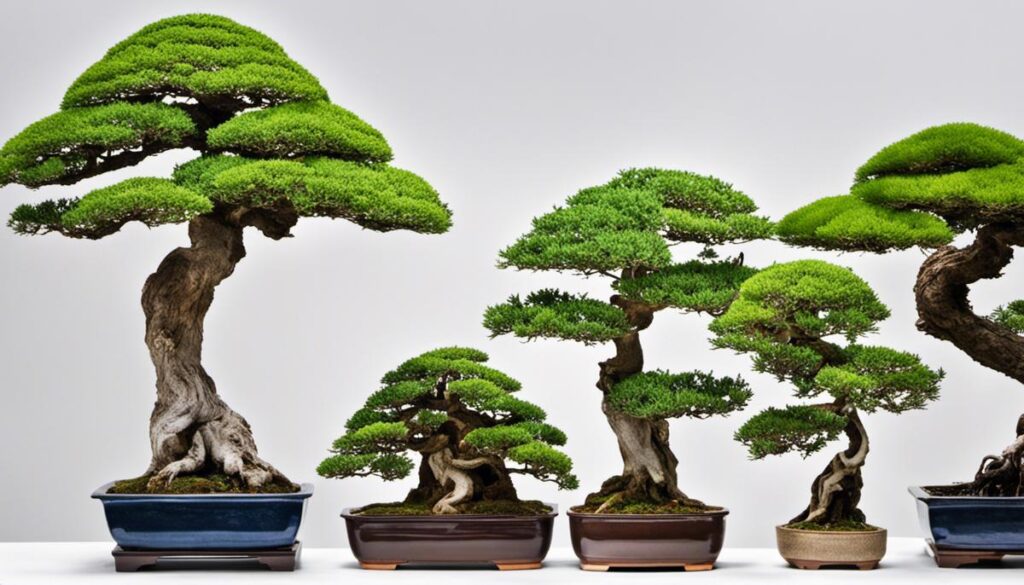Embarking on the journey to grow and nurture a bonsai tree is a path of immense patience, knowledge, and delicate care. Regardless if you are a bonsai enthusiast, a newbie eager to dip your toes into the world of meticulous green-thumbing, or someone wanting to understand the intricacies of tending to these miniature natural works of art, you will find this guide immeasurably useful.
We will delve into the specific needs of different bonsai tree species, the artful pruning techniques that shape their glorious physique, and warding off the threats posed by pests and diseases.
Understanding Bonsai Tree Species
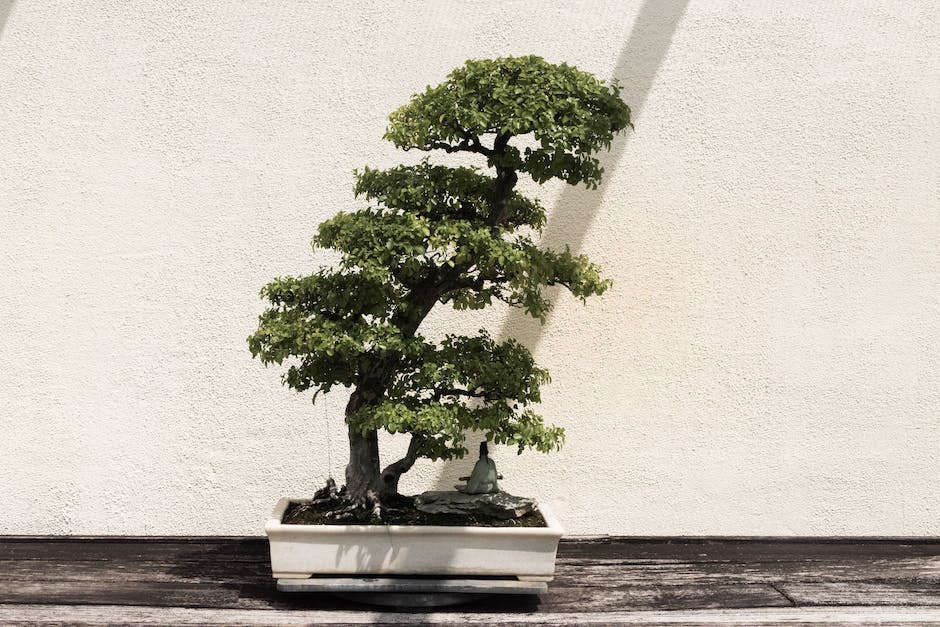
Understanding Bonsai Tree Species:
Each bonsai tree species comes with unique needs and characteristics that require specific care. Your plant’s health will significantly depend on whether you properly cater to these requirements, from the appropriate amount of sunlight to the right watering and soil needs.
Watering Necessities:
Different bonsai species have different watering needs. Generally, you should monitor your plant’s soil, ensuring it doesn’t completely dry out, while also avoiding waterlogging. How frequently you water your bonsai will depend on the type of tree, its size, time of year, soil mixture, and pot size. For example, coniferous bonsai species, such as firs or spruces, prefer to be kept slightly dry between watering, while other species like the ficus bonsai require a constant level of moisture.
Soil Requirements:
The right soil mixture gives your bonsai tree the nutrition it needs. Choosing the correct composition is typically based on the type of bonsai tree. Coniferous trees, for instance, would need a higher proportion of aggregates in their soil mix to increase drainage, whereas deciduous and flowering bonsai species prefer a slightly more acidic soil composition with higher organic matter. In general, the mixture should be able to retain water and nutrients but also provide good aeration.
Light Requirements:
Movement, growth, and development of a bonsai tree significantly depend on sufficient light exposure. Most species favor direct, yet diffused sunlight, and some should be protected from the midday sun to avoid scorching the leaves. Juniper bonsai trees can tolerate full sunlight, while species like the Chinese elm do well in partial shade. Therefore, it’s crucial to understand your particular bonsai tree’s light needs to provide the most ideal environment.
Bonsai Species Specifics:
Knowing your bonsai species is essential as care routines will differ. For example, a Pine bonsai tree prefers full sun and well-drained soil and needs less frequent watering. The Elm bonsai, on the other hand, requires indirect light, frequent watering, and rich well-draining soil. Ficus bonsai trees can manage in low-light conditions and prefer high humidity levels. Every species has its unique requirements and understanding these needs will set you up for success in caring for your bonsai tree.
Bonsai Pruning Techniques
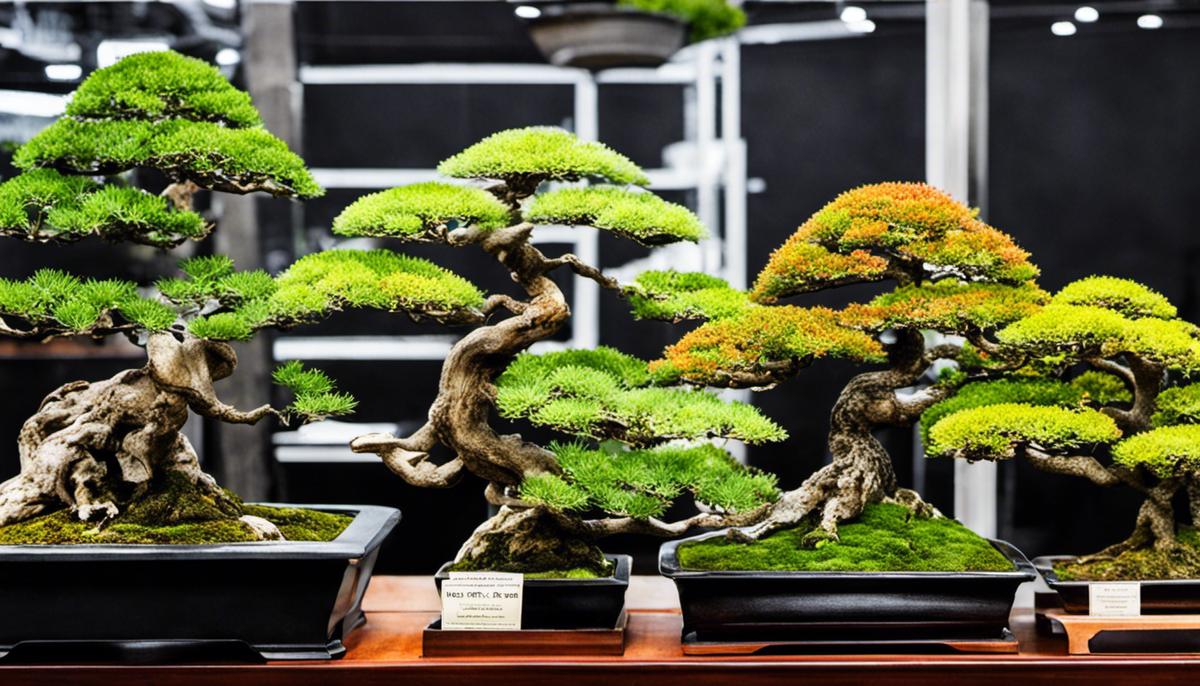
Understanding the Importance of Pruning
Pruning is a significant component of bonsai tree care. It is crucial for maintaining the tree’s petite size and for crafting its desired silhouette. Pruning not only shapes the appearance but also impacts the overall health of the bonsai tree. It encourages better air flow, reduces the risk of disease, and promotes a balanced and sustainable growth pattern.
The Basic Bonsai Pruning Techniques
Various techniques are used when pruning a bonsai tree, each with specific purposes. These include root pruning, maintenance pruning, and structural pruning.
The Art of Root Pruning
Root pruning is an important technique used to maintain the stature and health of a bonsai tree. By trimming the roots, you restrict the overall size as the tree cannot grow bigger than its root system allows. A general rule of thumb is to prune the roots during repotting, which should be every two to five years depending on the age and type of the tree. You will need to carefully remove the bonsai from its pot, loosening the dirt to expose the root ball. From there, root pruning should be done with clean, sharp scissors, cutting off approximately one-third of the root mass.
Year-Round Maintenance Pruning
Maintenance pruning is performed to remove growth that detracts from the bonsai’s shape or throws it off balance. This technique involves pruning back new growth to maintain the tree’s existing shape. You’ll need to monitor your bonsai regularly and clip back any growth as needed, maintaining the desired outline of the tree. Take time to study your bonsai from multiple angles before making cuts and always use sharp, clean tools to reduce stress on the plant and prevent disease.
Structural Pruning to Define Shape
Structural pruning is a more extensive and less frequent pruning technique used to shape and refine the bonsai tree’s overall design. This technique typically involves heavier cuts and is performed during the tree’s dormant stage, typically late winter or early spring. For structural pruning, it’s key to have a clear vision of the tree’s desired shape. Pay attention to the branch structure and define the tree’s primary, secondary, and tertiary branches. Remember, the goal is to achieve a balance of openness and fullness, creating a sense of depth and dimension.
Ensuring Healthy Pruning Practices
Pruning isn’t just about trimming here and there. It’s an ongoing commitment to assessing and improving the tree’s health and aesthetics. Take time to study and understand your bonsai, its needs, and growth patterns. Always use clean, sanitized tools for pruning to avoid infecting the tree. Lastly, following pruning, give the tree a little extra care—ensure it’s sufficiently watered, protect it from harsh weather, and provide it with the nutrients it needs to recover quickly.
Disciplined pruning techniques are key to encapsulating the beauty and magic of bonsai. It contributes to its longevity and maintains the miniature wonder that it is. With sharp shears and patience, anyone can master the art of pruning a bonsai tree.

Bonsai Tree Diseases and Pest Control
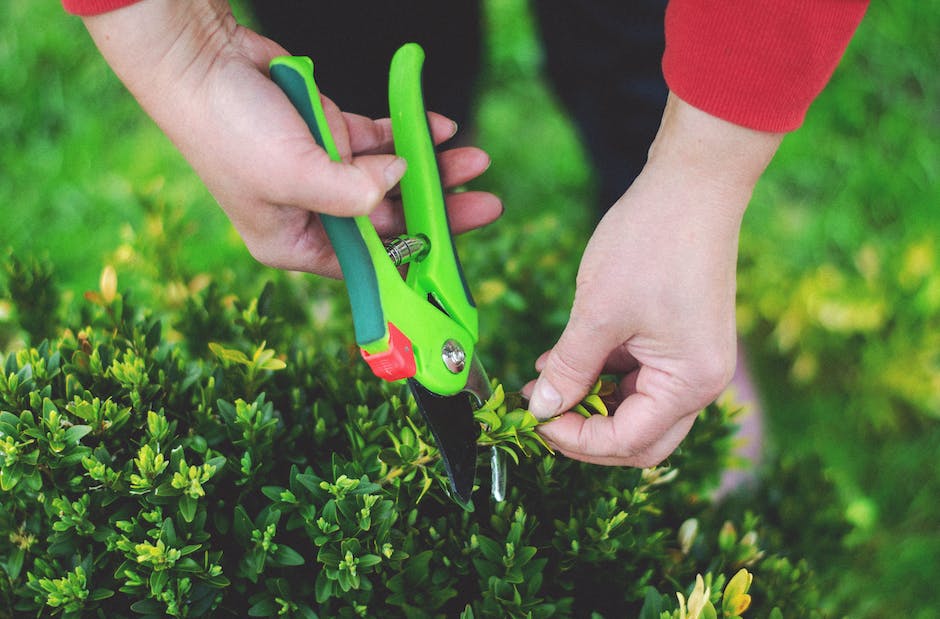
Recognizing Bonsai Tree Diseases and Pests
To take good care of your bonsai tree, it is important to recognize the different diseases and pests that often affect these trees. Common diseases include fungus issues, appearing as white powdery growth or dark brown spots on the leaves. Root rot is another common problem, indicated by wilting or yellowing leaves, slow growth, or a foul odor from the soil.
The usual pests that beset bonsai trees are aphids, spider mites, and scale insects. Aphids are small, soft-bodied insects that suck sap from the bonsai, causing distorted or yellowing leaves. Spider mites are tiny pests that also suck sap, leading to whitish or yellowish spots on the leaves. Scale insects cover themselves in a protective shell, making them hard to detect until a sticky residue (known as “honeydew”) or sooty mold becomes apparent.
Preventive Practices for Bonsai Tree Health
To prevent bonsai tree diseases and pests, keep the tree and its surrounding environment clean. Remove any fallen leaves or debris regularly, and ensure proper drainage to avoid waterlogging, which can lead to root rot. Regularly inspect the tree for signs of pests or diseases, and isolate it immediately if you notice any signs.
Maintaining the right conditions for your bonsai tree is also crucial. Ensure it receives the appropriate amount of sunlight, water, and humidity. If your tree is kept indoors, consider using a humidity tray to provide extra moisture. Carefully consider the fertilizers you use, ensuring they are appropriate for your specific tree species.
Treatments for Bonsai Tree Diseases and Pests
For fungal diseases, you can use a fungicide, making sure to thoroughly cover the affected leaves or branches. In case of root rot, remove the tree from the pot, trim the affected roots, and repot the tree in fresh soil.
For pest control, a combination of hand removal and the use of insecticidal soap sprays can usually manage an infestation. The soap sprays work by breaking down the protective layers of the insects, causing them to dehydrate. Consider using a systemic insecticide for pests that are hard to reach or for a severe infestation.
Despite these problems, remember that the health of bonsai trees can be maintained with the right attention and care. Regularly inspect your trees, react swiftly at the first sign of trouble, and consult with a bonsai expert if you are unsure. With proper care, your bonsai tree will continue to be a fascinating and beautiful addition to your home or office for many years to come.
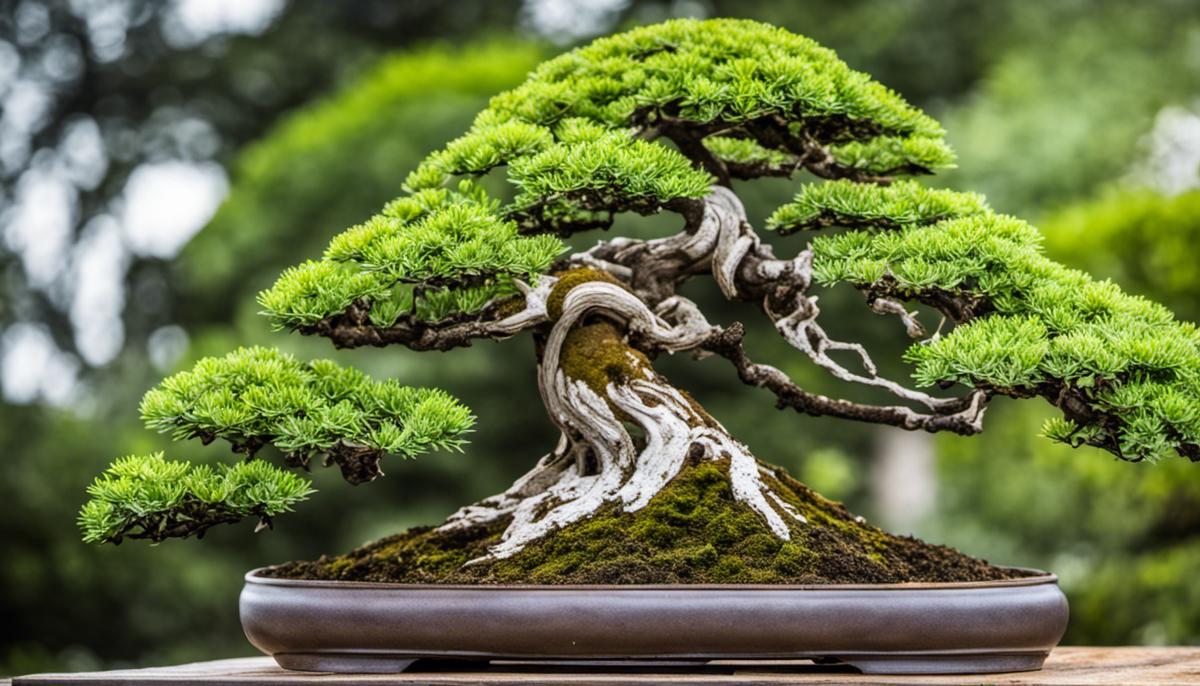
In essence, the art of bonsai is a multi-faceted discipline, presenting a surprising mix of botany, horticulture, creativity, and mindfulness. Indeed, bonsai trees require more than just watering and occasional pruning; they demand a profound understanding and appreciation of their individual needs and characteristics.
It is our hope that after reading our guide about bonsai tree species, pruning techniques, and preventions against diseases and pests, you feel more equipped to nourish your bonsai’s growth. The road towards mastering bonsai care might be long, but undoubtedly worthwhile and rewarding in the end.
